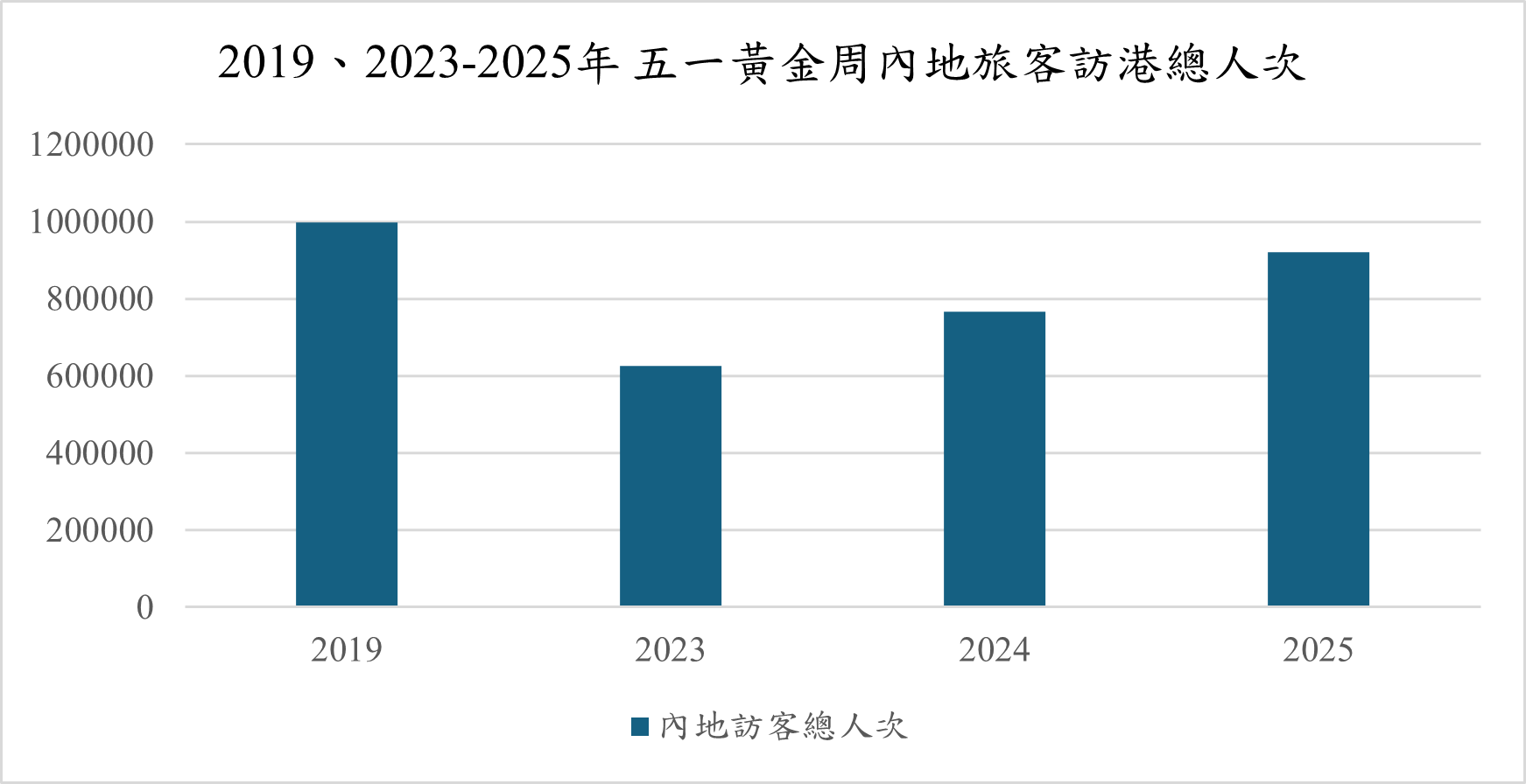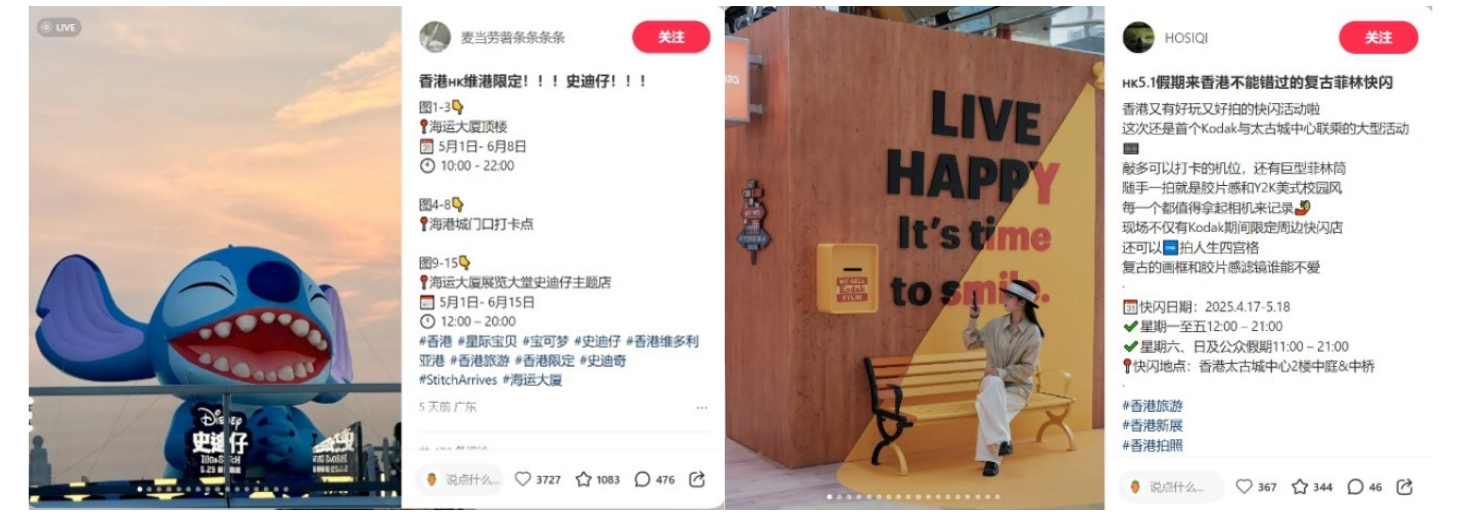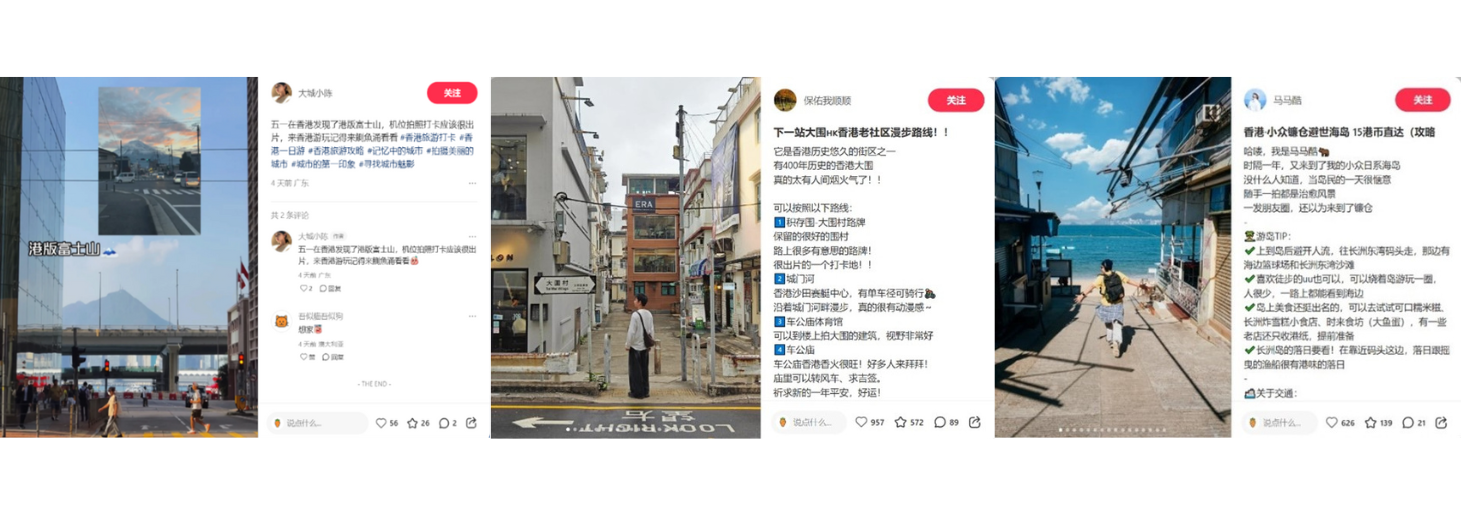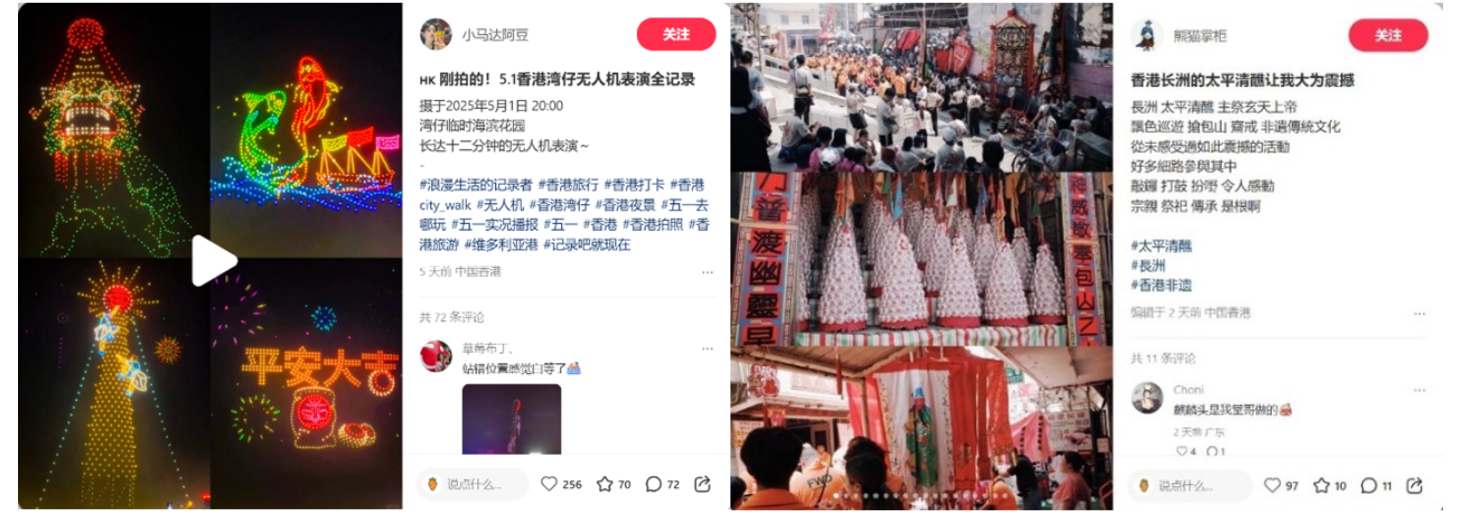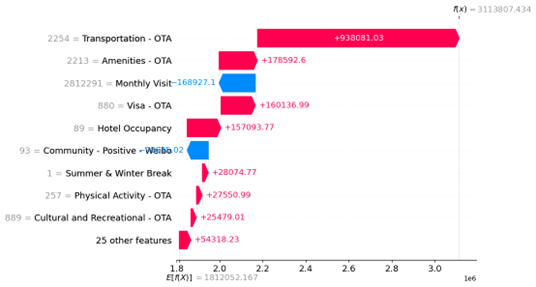Coinciding with the “May Day Golden Week,” the Hong Kong Tourism Board seized the opportunity to host a drone show on May 1 at the Wan Chai Temporary Promenade, themed around three intangible cultural heritage festivals—Tin Hau Festival, Tam Kung Festival, and the Cheung Chau Bun Festival—offering visitors a spectacular visual feast. Additionally, shopping malls and cultural landmarks across Hong Kong rolled out a variety of activities and promotions, providing tourists with diverse shopping and photo opportunities. Chief Executive John Lee described the Golden Week as a period of thriving business and prosperity, while Annie Yau Tse, Chairwoman of the Hong Kong Retail Management Association, noted that retail sales during the holiday, particularly in jewelry, cosmetics, and dried seafood, rose by about 30% compared to the same period last year.
On May 20, the Hong Kong Government officially announced the first-phase projects of the Working Group on Developing Tourist Hotspots, vigorously promoting the concept of “tourism is everywhere [處處是旅遊].” But what aspects of Hong Kong currently appeal most to visitors?
Increase in Mainland Tourists During 2025 May Day Golden Week
During the May Day Golden Week (May 1 to May 5), the Immigration Department recorded approximately 919,000 mainland visitor arrivals through various land, sea, and air checkpoints, marking a 22.5% increase year-on-year and accounting for about 84% of total inbound tourists. However, this figure has yet to return to pre-pandemic 2019 levels, which approached 1 million. The peak day for mainland arrivals was May 2, with around 267,000 visitors entering Hong Kong. The most frequently used control point was the West Kowloon Station, followed by the Lok Ma Chau Spur Line Control Point.
“Free of Change” Remains the Key to Attracting Tourists
During the holiday, several control points, such as Lok Ma Chau Station, experienced overcrowding, with wait times extending to several hours. Hotel occupancy rates generally reached 90%, but some tourists had not booked accommodations in advance. Notably, some mainland visitors who lost their identification documents opted to rest—or even stay overnight—for free at fast-food restaurants, sparking online discussions. Other free of charge activities remained highly popular, with tourists flocking to exhibitions and events such as the Stitch event at Harbour City and the Kodak exhibition at Taikoo. Even on a limited budget, visitors could immerse themselves in Hong Kong’s diverse cultural and artistic offerings, aligning with the emerging trend of “budget travel.”
Hong Kong’s Niche Spots Rival Japanese Landmarks?
Interestingly, a new trend has emerged on mainland social media, where tourists compare Hong Kong’s districts to famous landmarks elsewhere. For example, Tai Wai has been dubbed “Hong Kong’s Little Kyoto” for its nostalgic walled-village ambiance reminiscent of Kyoto’s historic streets. Sogo department store in Causeway Bay and its surrounding areas are called “Little Shibuya,” blending shopping, trends, and youth culture. Cheung Chau, with its natural island scenery and laid-back vibe, is hailed as “Little Kamakura.” Meanwhile, the view of Fei Ngo Shan (Kowloon Peak) from near Healthy Street East in Quarry Bay, especially when shrouded in mist, has earned the nickname “Hong Kong’s Mount Fuji,” becoming a new hotspot for photos. These comparisons not only help visitors better understand Hong Kong’s diverse charm but also boost exposure for lesser-known attractions, creating new highlights for the “tourism is everywhere [處處是旅遊]” initiative.
Intangible Cultural Heritage Activities Promote In-Depth Cultural Tourism
Intangible cultural heritage events were also a major draw during the Golden Week holiday. A 12-minute drone show in Wan Chai, themed around the Tin Hau Festival, Tam Kung Festival, and Cheung Chau Bun Festival, attracted large crowds of locals and mainland tourists. Around 1,000 drones formed vivid patterns in the night sky, including a dancing qilin (auspicious beast), the Cheung Chau Bun Scrambling Competition, and giant floral cannons, creating an electrifying atmosphere. Incorporating intangible heritage elements into the drone show deepened viewers’ appreciation for Hong Kong’s culture. This event, along with the Cheung Chau Bun Festival and the Tam Kung Festival in Shau Kei Wan, became standout cultural tourism highlights during the holiday. As a national-level intangible cultural heritage event, the Cheung Chau Bun Festival’s parade and bun-scrambling competition drew around 65,000 participants. These activities not only showcased Hong Kong’s rich cultural heritage but also integrated modern technology and creativity, fostering deeper cultural tourism experiences.
Hong Kong to Welcome Tourism Peak in June
According to the latest data from the “Wisers Tourism Index,” Hong Kong is expected to hit a tourism peak in June 2025. Beyond the influence of summer vacations, facilities, sports events, and cultural entertainment are the three core attractions for visitors. The success of the May Day Golden Week and recent major events has laid a solid foundation for June’s tourism market.
Overall, during the 2025 May Day Golden Week, Hong Kong’s tourism market continued to recover, with steady growth in mainland visitor numbers and emerging trends in travel patterns and consumption habits. As post-pandemic visitor records are broken, Hong Kong must improve crowd management and continue developing new tourism initiatives to create a diverse and inclusive travel environment, aligning with the broader vision of “tourism is everywhere [處處是旅遊].”

